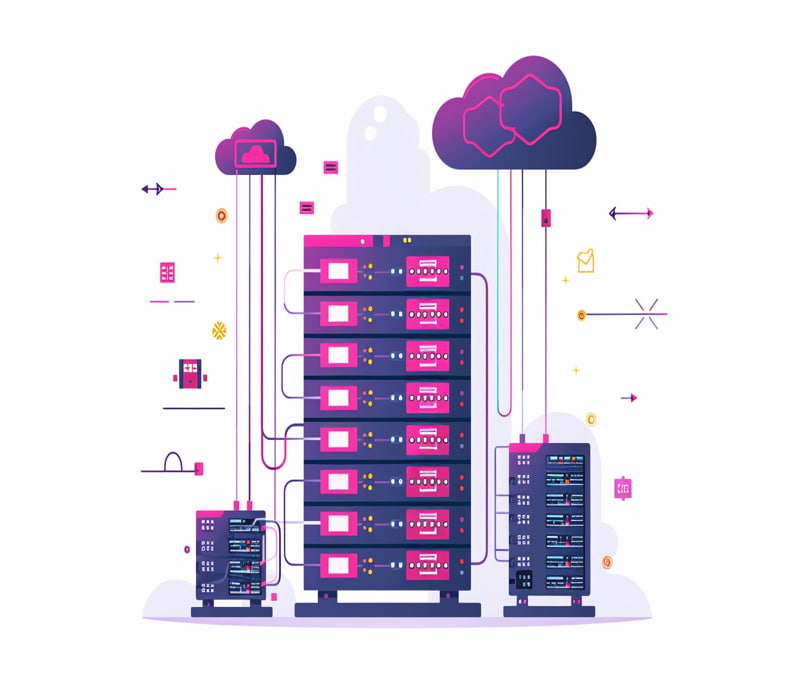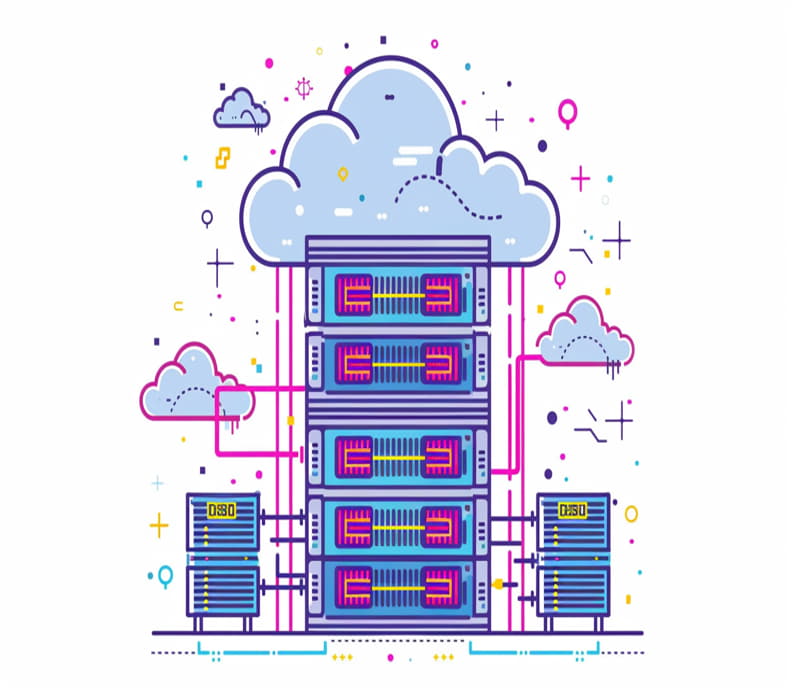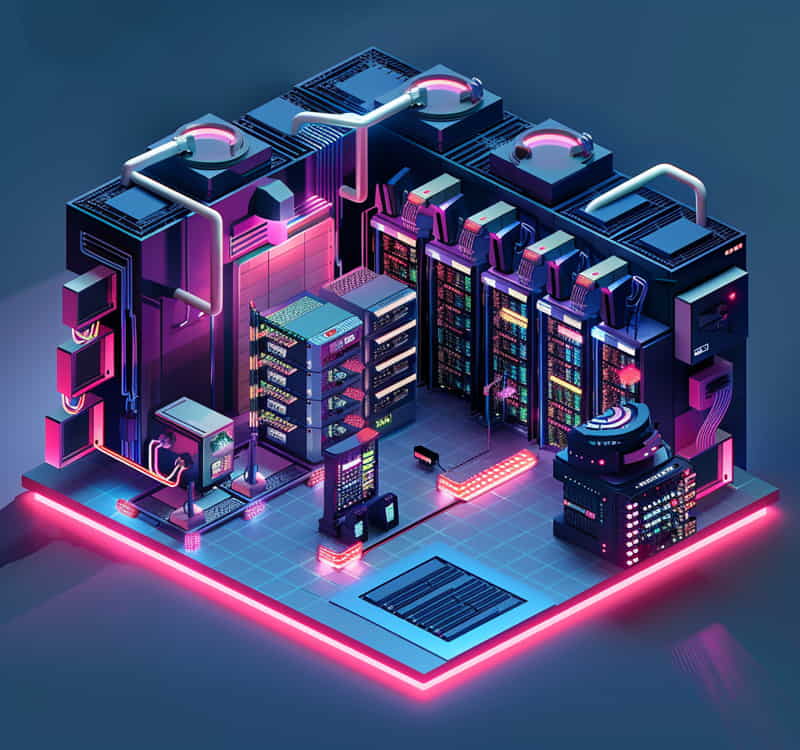SAP Interview Questions
SAP Interview Questions!!! Are You Prepared to Answer SAP Interview Questions Confidently and Land the Job of Your Dreams?
Look no further, we have everything covered! If you are starting your career in SAP, our team of experts has compiled a comprehensive list of essential SAP interview questions and answers in our SAP Interview Guide.
Whichis designed specifically for novice interviewers, ensuring they are prepared for each and every one.
Be confident when facing tough SAP interviews as an expert.

SAP Interview Questions and Answers:
1. What is SAP and what are some of its popular products?
SAP is a popular software service used by top companies worldwide, including Apple and Microsoft. It has over 400 products in its portfolio, including on-premise software services and platformer service products.
Some of the most widely popular SAP products include SAP Business Suite, ECC, Customer Relationship Management, Supply Relationship Management, Supply Chain Management, Product Life Cycle Management, SAP HANA, SAP Solution Manager, and SAP S4HANA.
2. What are some of the cloud products offered by SAP?
SAP’s cloud products include S4HANA Cloud, C4HANA, Ariba Integrated Business Planning, SuccessFactors, Conker Field Class, Analytics Cloud Business Technology Platform, and SAP Cloud Application Life Cycle Manager (COM).
3. What are the five software applications in the SAP Business Suite?
The SAP Business Suite consists of five software applications: SAP ECC, CRM, SRM, SCM, and PLM.
4. What are the business processes that can be handled using the applications in the SAP Business Suite?
These applications can be used for various business processes, such as managing finances, running payroll, resource planning activities, customer care, sales, marketing, vendor management, supply chain efficiency, and product development and manufacturing.
5. What was the initial method used by the company to store data and later what developments were made?
The company initially stored data on punch cards, but later developed R1 and R3 to store data locally on computers.
6. How is SAP ECC developed?
SAP ECC is developed using service-oriented architecture, which uses software components called services to create business applications.
Modules within the system consist of specific business processes required to operate a specific part of a company, such as SAP Finance.
7. What is SAP’s plan regarding the maintenance support for its ECC software?
SAP plans to end maintenance support for its ECC software, and also requiring customers to migrate to S4HANA by the same time.
8. What are the functionalities offered by SAP CRM 7.0?
SAP CRM 7.0 offers functionalities related to sales, marketing, service, customer interaction, and channels.
9. What are the major concerns addressed by SAP’s supplier relationship management (SRM) software?
The software addresses five major concerns: spend analytics, sourcing, contract management, operational procurement, and invoice management.
10. What is the end-of-life date for SAP CRM 7.0 and what is the recommended solution for customers after that?
SAP CRM 7.0 is supported until December 31, 2025, after which it recommends customers migrate to its next-generation cloud-based CRM solution, SAP C4HANA.
11. What is the role of supply chain management (SCM) and what software does SAP offer for this process?
Supply chain management (SCM) is the process of centrally managing the flow of goods from raw materials to finished products, essential for large organizations dealing with complex transportation requirements.
SAP offers the SCM Server application suite, which supports real-time decision making and collaborative network optimization across the extended supply chain.
12. What are the functions provided by the SCM Advanced Planning and Optimization APU?
The SCM Advanced Planning and Optimization APU offers strategic, tactical, and operational business planning, cooperation between partners, and constant optimization and evaluation of supply chain network efficiency.
It employs embedded SAP BI and SAP LiveCatch to improve forecasting and deployment tasks.
13. What are the benefits of using SNC for supply chain collaboration?
SNC enables participants in a complex supply chain network to effectively collaborate, helping with inventory management, timely replenishment shipments, advanced shipping notifications, invoice creations, forecasting, and work order collaboration.
14. What is the role of EWM in the SAP supply chain management solution?
EWM is a sophisticated warehouse management solution that works in tandem with SAP ECC or S/4HANA, providing more control over warehousing processes and tools to improve warehouse efficiency, transform operations, and boost competitiveness.
15. What is the function of Event Management (EM) in the SAP supply chain management solution?
Event Management (EM) allows for the processing of application objects in different application systems and tracking events across the entire supply chain.

16. What optimization engines does SAP SEM Optimizer offer for most SEM applications?
SAP SEM Optimizer provides optimization engines for most SEM applications, enabling detailed protection scheduling, supply network planning, supply demand matching, transportation planning, vehicle scheduling, and sequencing.
17. How does SAP SEM Solutions help manage supply chain operations?
SAP SEM Solutions offers powerful applications for managing supply chain operations, including predictive analytics and machine learning.
For instance, Wall Greens, a major pharmaceutical company, uses SAP SEM solution to predict customer behavior and scale up to meet demand, reducing excess inventory and lowering costs associated with transportation and warehouse storage.
18. What are some of the SAP products that have replaced the on-premise SEM product?
SAP has introduced products like Logistics, EWM, TM, SAP Ariba, and IBP as replacements for the on-premise SEM product.
19. What is Product Life Cycle Management (PLM) and what capabilities does it include?
Product Life Cycle Management (PLM) is a product that manages the development life cycle of both physical and digital products.
It includes capabilities such as costing, product engineering, product development tools, project management, portfolio and project management, product costing, product development, product engineering, product complaints, and integration.
20. What are the different editions of SAP’s PLM product?
SAP’s PLM product is available in several editions, including an older version built on network technology and the most recent as part of SAP S/4HANA.
21. What is the role of SAP Solution Manager in Application Life Cycle Management?
SAP Solution Manager is an application life cycle management software that can manage both SAP and non-SAP products.
It is a crucial component of an organization’s SAP environment, primarily used for sending data about their SAP systems to SAP.
It offers various functionalities, such as application operations, business process operations, data value management, change control management, custom code management, IT service management, process management, project management, test suite, focused build, and focused insights.
22. What functions does the solution manager offer for application operations?
The solution manager offers functions for system monitoring, integration monitoring, user experience monitoring, root cause analysis, and dashboards for application operations.
23. What is the role of the solution manager in business process monitoring?
The solution manager tracks the performance of critical business processes, allowing for the definition of metrics and setting alerts to notify of problems.
24. What is the role of the solution manager in interface monitoring?
The solution manager tracks the technical integration of multiple SAP or SAP and non-SAP systems, allowing for automatic notifications of integration failures or message flow issues.
25. What is the role of job scheduling management in an SAP system?
Job scheduling management is a crucial feature in an SAP system that allows for the management of background jobs from a single location, ensuring consistency without logging into multiple systems.
26. What is data consistency management and how does it prevent data inconsistencies?
Data consistency management ensures accurate and up-to-date data between systems, preventing data inconsistencies that impact business operations.
27. What tools help monitor key performance indicators in an SAP system?
Business process improvement tools help monitor key performance indicators, providing transparency into business operations and identifying bottlenecks.
28. What is business process performance optimization (BPPO) and how does it help detect performance issues?
Business process performance optimization (BPPO) helps detect performance issues in end-to-end business processes.
29. What is data volume management (DVM) and what does it manage in an SAP system?
Data volume management (DVM) manages the size of a system’s database, providing guidance on data archiving or deletion.
30. What is the role of SAP Solution Manager in application lifecycle management?
SAP Solution Manager is a comprehensive tool that allows for end-to-end application lifecycle management, including custom code management, IT service management, process management, project management, test management suite, and focused build.
31. What are the benefits of using SAP Solution Manager instead of multiple third-party ALM tools?
SAP Solution Manager does not require additional licenses, and usage rights are included in the SAP support contract, saving license costs and lowering the total cost of ownership of SAP systems.

SAP Training

32. What is SAP HANA and how does it simplify IT and lower costs?
SAP HANA is a multi-model database that keeps data in memory rather than disk, enabling businesses to process massive amounts of data with near zero latency, query data in real time, and become truly data-driven.
It simplifies IT, helps businesses innovate, and lowers costs by combining multi-data management capabilities and making all data instantly available from a single system.
33. What makes SAP HANA significantly faster than other database management systems?
SAP HANA is significantly faster than other database management systems due to its column-oriented in-memory design and the combination of online analytical processing overlap and online transactional processing OLTP.
34. What type of computer storage system is an in-memory database, and how does SAP HANA utilize it?
An in-memory database is a type of computer storage system that stores data in its main memory, RAM, rather than on traditional disks or solid-state drives.
SAP HANA was designed to work with data in memory first, then rely on other storage mechanisms to balance performance and cost.

35. What are advantages of using SAP HANA for businesses?
The advantages of using SAP HANA include versatility, efficiency, effectiveness, scalability, flexibility, intelligence, comprehensive data and application security, fast setup, and the latest version of SAP HANA on-premises.
36. What is SAP S4HANA, and how does it differ from previous versions of SAP?
SAP S4HANA is an ERP business suite built on the SAP HANA in-memory database, enabling businesses to perform transactions and analyze business data in real time.
It uses Fiori as its user interface and connects devices, environments, and platforms to SAP systems using open data protocol (OData).
The application engine in S4HANA has a simplified data model, reducing the number of tables needed for day-to-day business operations and significantly reducing the system’s memory footprint.
37. How does SAP S4HANA utilize the HANA database?
SAP S4HANA runs exclusively on the HANA database, which combines OLTP and OLAP into a single system. Its evolution includes SAP ECC, which can run on various databases, and the suite on HANA, which can run on the HANA database.
38. What modules does SAP S4HANA include, and what industries does it serve?
SAP S4HANA includes modules for finance, asset management, manufacturing, research and development engineering, sales and distribution, services, sourcing and procurement, and supply chain management.
It serves over 25 industries, including energy and natural resources, service industries, consumer industries, discrete industries, financial services, and public services.
39. In what forms is SAP S4HANA available, and what is the status of SAPECC regarding cloud hosting?
SAP S4HANA is available in several forms, including on-premise, private cloud, and public cloud. SAPECC does not have a pure cloud version but can be hosted on hyperscale’s like AWS, Azure, or Google Cloud.
40. What are the benefits of using SAP S4HANA compared to SAP ECC, such as reduced footprint and faster reporting?
SAP S4HANA claims to release a customer’s footprint by 50% using HANA’s data compression technique and reports run 100 times faster in S4HANA compared to an ECC system.
41. What innovations are introduced in SAP S4HANA that are not available in SAP ECC?
SAP S4HANA introduces numerous innovations, such as embedded analytics, robotic process automation, and SAP co-pilot, which SAP ECC does not support.
42. What are the differences between SAP S4HANA private cloud and public cloud?
SAP S4HANA private cloud is hosted on SAP’s data center or one of its approved hyperscale’s, while the public cloud is hosted only on SAP’s data center. They have different features such as infrastructure, license, upgrades, responsibility, and implementation time.
43. What is SAPC for HANA, and what applications does it consist of?
SAPC for HANA is a suite of marketing, sales, and customer relationship management applications created by SAP in 2018 after acquiring several CRM companies.
It consists of five different cloud applications: SAP Commerce Cloud, SAP Sales Cloud, SAP Service Cloud, SAP Marketing Cloud, and SAP Customer Data Cloud.
44. What functionalities does SAP Commerce Cloud offer as an omni-channel e-commerce solution?
SAP Commerce Cloud is an omni-channel e-commerce solution that simplifies customers’ purchasing processes by providing the best possible functionalities from search to sales.
It offers omni-channel commerce, product content management, order management, industry-specific features, and website editing tools.
45. What does SAP Marketing Cloud provide, and how does it use customer data?
SAP Marketing Cloud, built on SAP Hibers Marketing, provides a complete picture of customers, including their intentions, motivations, and needs.
It uses this data to update an all-around profile for existing and potential customers constantly, tracking their movements, websites, apps, and interactions.
46. What are the key capabilities of SAP Marketing Cloud?
SAP Marketing Cloud offers features such as Dynamic Customer Profiling, Marketing planning and performance, Audience campaigns and journeys, Lead and account-based marketing, and Marketing analytics.

47. What are the features of SAP Service Cloud?
SAP Service Cloud includes SAP Hybrid Cloud for Service, SAP Customer Engagement Center, and Core Systems Field Management Technology.
It offers functionalities like Omni-Channel Service, intelligent ticket management, analytics and experience management, learning and knowledge management, integration with other solutions, sales order management, mobile experience, productive analytics and machine learning, collaboration and productivity, and customer data cloud.
48. What analytics capabilities are available in SAP Service Cloud?
Analytics capabilities in SAP Service Cloud track service performance, agent workload, ticket completion rate, SLAs, and other metrics.
49. What does SAP Sales Cloud offer?
SAP Sales Cloud combines SAP Hybrid Cloud for Sales, subscription billing, and Canada’s cloud to assist organizations in connecting with and guiding customers throughout their purchase journey.
50. What functionalities does sales order management offer in SAP Sales Cloud?
Sales order management in SAP Sales Cloud allows for real-time product pricing and inventory information, as well as industry-leading capabilities for product configuration, bundling, intelligent product margin guidance, and compelling proposal generation.
51. What does SAP Customer Data Cloud offer?
SAP Customer Data Cloud stores customer data that other C4HANA solutions can access. It collects data from known and unknown visitors to a company’s website, allowing companies to build trust and valued relationships with customers.
52. What are the three main categories of SAP SuccessFactors modules?
SAP SuccessFactors modules are divided into three main categories: Core HR, talent management, and reporting and analytics.
53. What functionalities does the Core HR category offer?
Core HR includes modules like employee central, which processes payroll, and talent management modules like performance and goals, compensation, recruiting, onboarding, learning, succession and development.
54. What features does SAP SuccessFactors employee central provide?
SAP SuccessFactors employee central provides time and attendance management, document management, employee master data management, and HR document management.
55. What are the talent management modules offered by SAP SuccessFactors?
Talent management modules include performance and goals, compensation management, and recruiting. SAP SuccessFactors also offers guided compensation planning, rewards, and personalized recognition programs.
56. How can organizations effectively manage their HR and employee management processes using SAP SuccessFactors?
Organizations can effectively manage their HR and employee management processes using modern recruiting techniques like social media platforms, virtual reality communications, and application tracking systems offered by SAP SuccessFactors.
57. What are the reporting and analytics solutions offered by SAP SuccessFactors?
SAP SuccessFactors offers reporting and analytics solutions, including workforce analytics, workforce planning, and enterprise analytics.
58. What are the different models for using SAP solutions?
The solutions offered by SAP are divided into four main categories: database and data management, analytics, application development and integration, and intelligent technologies.
The platform as a service (PaaS) model allows users to focus on developing applications without building and maintaining infrastructure.
Software as a service (SaaS) involves the service provider managing everything, and infrastructure as a service (IaaS) is cloud-based services that use space for storage, networking, and virtualization.
59. What database options does SAP offer?
Database and data management includes various database options like SAP HANA, SAP HANA in the cloud, and SAP IQ.
60. How does SAP Business Technology Platform (BTP) help in application development and integration?
SAP Business Technology Platform (BTP) excels in application development and integration with pre-built integration libraries and KPIs that allow customers to integrate their systems with other SAP systems and third-party systems.
It also offers an extension suite, which is a self-contained web application that can be integrated with any SAP product to enhance functionality and meet end-to-end business process requirements.
61. What intelligent technologies does SAP Business Technology Platform offer?
SAP Business Technology Platform offers a range of intelligent technologies, including the Internet of Things, Edge Services, Robotic Process Automation, Conversational AI, and AI Business Services.
These technologies can be integrated with SAP products to provide advanced functionality and automation.
62. What is SAP Cloud Application Lifecycle Management (COM)?
SAP Cloud Application Lifecycle Management (COM), also known as Cloud ALM, is a cloud application built from the ground up by SAP and hosted on the SAP Business Technology Platform.
It is not just a cloud-hosted solution manager but a cloud application that SAP installs and maintains.

SAP Training

63. What are the two categories of SAP KARMS capabilities?
The SAP KARMS capabilities are divided into two categories: cloud ALM for implementation and cloud ALM for operations.
In the implementation phase, SAP designs, builds, tests, and deploys the software, while in the operation phase, it detects, analyzes, resolves, and automates issues.
64. What does the cloud ALM for operations include?
The cloud ALM for operations includes monitoring functionalities for end-to-end business processes, integration of multiple SAP and non-SAP applications, performance monitoring, and incident management.
65. Where can users find a list of solutions that support cloud ALM functionality?
SAP has created a website that lists various solutions that support cloud ALM functionality, which can be filtered based on the SAP application.

66. What is SAP Ariba, and what are its main features?
SAP Ariba is a cloud-based procurement and supply chain platform that helps companies buy, sell, and manage their cash flow.
It provides various tools and features to streamline procurement processes, including sourcing, procurement, invoicing, and payment management.
67. What are the strategic sourcing solutions offered by SAP Ariba?
SAP Ariba offers strategic sourcing solutions to help organizations find the best suppliers and negotiate the best prices for goods and services.
68. What is SAP Integrated Business Planning (IBP), and what are its main functions?
SAP Integrated Business Planning (IBP) is a cloud-based solution powered by SAP HANA, designed to assist businesses in managing complex supply chains and streamlining operations at multiple levels.
It offers sales and operations, inventory planning, and supply planning functions to help organizations predict demand and manage supply effectively.
69. What is SAP Concare, and what are its main functionalities?
SAP Concare is a cloud-based travel and expense management software acquired by SAP in 201It offers three main functionalities: Concare expense, Concare travel, and Concare voice.
Concare expense allows employees to create, submit, and approve expense reports using any device, while Concare travel allows employees to book travel and integrates with different travel agencies.
Concare also provides management transparency on invoice capture and allows tracking and controlling the timing of payments to pay vendors on time and take advantage of early payment discounts.
70. What is SAP Fieldglass, and what are its main features?
SAP Fieldglass is a cloud-based software platform that helps organizations manage their content workforce and services procurement processes.
It provides tools for sourcing, engaging, and managing non-employee workers, including temporary staff, freelancers, independent contractors, and external service providers.
SAP Fieldglass’s workforce management, sourcing, and analytics features allow organizations to track vendor performance, optimize contingent workers, and engage qualified candidates for contingent work.
71. What is SAP Analytics Cloud, and what are its key features?
SAP Analytics Cloud is a cloud-based software platform that offers data analysis, visualization, and reporting tools to help organizations make informed decisions.
Key features include data integration, machine learning algorithms, visualization options, collaboration, mobile access, pre-defined templates, and customization.
72. What are the three layers of an SAP on-premise system, and what functions does each layer perform?
The three layers of an SAP on-premise system are the presentation layer, application layer, and database layer.
The presentation layer allows users to access the system, the application layer is where the Java application server is located, and the database layer is where the system’s database is located.
73. What are the components of the ABAP system, and what functions do they perform?
The ABAP system consists of an ABAP server central services instance (ASES) and an application server instance.
The ASES and application server instances can be installed on the same server or separate hosts. The ASES includes a separate start service, a message server, and an N Q server, which communicate and manage application server status, load distribution, and logs.
An application server comprises an ABAP dispatcher, a gateway, an internet communication manager, a start service, and work processes, which distribute work based on request type, communicate with other systems, and manage database updates and print requests.
74. What is the role of the ASES in an SAP system?
The ASES (Advanced Business Application System) is an administrative unit within the SAP system that manages application servers, including a message server for communication and load distribution and an NQ server for managing logs and preventing synchronization issues.
75. What are the functions of the ABAP dispatcher and gateway in an application server?
The ABAP dispatcher distributes work processes based on the type of request received, while the gateway allows the system to communicate with other SAP and non-SAP systems via RFC (remote function call) protocol.
76. What are the different types of work processes in an SAP system?
Work processes are classified as dialogue, update, batch, print, or in queue. Dialogue work processes handle all requests made by an active user, update work processes update the database.
Batchjobs run in the background without requiring user interaction, print work processes manage and process all print requests, and NQ (Non-locking) work processes handle object logs and un-locks, preventing data inconsistencies.
77. What is ABAP, and what is it used for in creating SAP on-premise applications?
ABAP (Advanced Business Application Programming) is the primary programming language used to create SAP on-premise applications.
All ABAP programs are stored in the SAP database, with source code and generated code in two forms, and the runtime system controls the execution of ABAP programs.
78. What tools do developers use to create ABAP programs in an SAP system?
Developers use the SAP NAPE Web application service ABAP workbench or SAP BTPs development tools, which include the ABAP editor, ABAP dictionary, ABAP painter, function builder, class builder, and web application builder.

79. How long do SAP projects typically take to implement, and what are the six stages of an SAP project?
SAP projects can take from months to years to implement, depending on the number of solutions implemented and the organization’s complexity.
They go through six stages: project preparation, blueprint, implementation, testing, goal life, and support.
80. What is the role of functional consultants in the implementation phase of an SAP project?
Functional consultants configure business processes, workflows, and reports during the implementation phase of an SAP project.
81. What are the four types of testing performed in an SAP project?
Unit testing is the first test performed after configuration changes are configured in the development system.
System integration testing transfers changes to the SAT system for system integration testing, linking to both SAP and non-SAP applications.
User acceptance testing (UAT) tests end users to test business processes and configurations before approving goals.
Trust rehearsal is held just before the actual goal, replicating steps to ensure a safe goal.
82. What is the role of the support team in an SAP project?
The support team provides 4 to 6 weeks of hyper care support to prioritize and resolve defects after the implementation of an SAP project.
83. Who are the end users in the SAP ecosystem, and what products do they use?
End users in the SAP ecosystem work in specific business process areas, such as finance, procurement, sales, or marketing, and use SAP’s ECC or S4HANA products to perform their tasks.
84. What are the roles and responsibilities of a functional consultant in an SAP project?
A functional consultant configures an SAP system to meet a company’s needs, including creating master data, rules, and business process flows. They also perform testing, provide support, and train end users.
85. What are the roles and responsibilities of a technical consultant in an SAP project?
A technical consultant installs, upgrades, integrates, maintains, and operates SAP systems from a technical standpoint, using knowledge in operating systems, databases, networks, servers, and technical configurations.
86. What is the role of a developer in an SAP project?
Developers can become SAP developers if they are good at programming and learning the ABAP programming language.
87. What is the role of an SAP security consultant?
SAP security consultants design and implement security strategies for an SAP system, defining user roles and privileges, setting up authentication and authorization controls, and ensuring compliance with relevant security standards and regulations.
88. What is the role of an SAP project manager?
An SAP project manager leads and coordinates the implementation of SAP software within an organization, developing project plans, budgets, schedules, and managing resources, stakeholders, and risks.
89. What is the most popular product of the SAP company?
The most popular product of the SAP company is SAP ERP, which is enterprise software to manage business operations and customer relations.
90. What is the meaning of SAP in the context of enterprise software?
SAP stands for “Systems, Applications, and Products in data processing.”
91. How can individuals access free trials of SAP products?
Individuals can visit the SAP Software Trials website, the SAP Developers website, or the SAP Cloud Appliance Library to access free trials of SAP products.
92. What does SAP offer in terms of cloud-based demo environments?
The cloud-appliance library offers a fully configured demo environment integrated with cloud providers like Microsoft Azure, Amazon AWS, and Google Cloud.
93. What is SAP ERP and how does it help businesses?
SAP ERP (Enterprise Resource Planning) is a software solution that allows businesses to run processes like accounting and human resources in an integrated environment.
Centralized data ensures information is accessible and consistent throughout the enterprise, resolving issues with decentralized storage.

In conclusion, SAP is a leading software solution provider that offers a comprehensive range of enterprise resource planning (ERP) solutions to businesses across various industries.
With its centralized data management system, SAP ERP enables businesses to streamline their processes, improve efficiency, and gain insights into their operations.
By focusing on building its cloud computing capabilities and adapting to new market demands, SAP continues to deliver market-leading ERP software to businesses around the world.
Whether you are a fresh graduate or an experienced professional, preparing with the right skills and certifications can open up exciting opportunities in the SAP field.
With its user-friendly interface, industry-specific applications, and commitment to innovation, SAP is an excellent choice for businesses looking to optimize their operations and stay competitive in today’s fast-paced business environment.
I hope you will rock in your next interview.
All the Best!!!

SAP Course Price


Saniya
Author